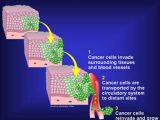Researchers with the Georgia Institute of Technology claim to have gained new insight into how cancer spreads through to the human body. What's more, they say that, now that they know more about how metastasis occurs, they might be able to block or at least slow this process.
In a study published in The Journal of the Federation of American Societies for Experimental Biology (FASEB for those who don't want to run out of breath when saying its name), the scientists detail that metastasis is made possible by a gene that normally controls embryonic development and that goes by the name of SNAIL.
It is believed that, were the researchers to find a way to toy with the behavior of this gene and keep it from facilitating the spread of cancer, fewer people diagnosed with this condition would reach metastasis. Otherwise put, this study has the potential to save thousands of lives, the Georgia Institute of Technology specialists explain.
A better understanding of metastasis
In their paper, the scientists who conducted this investigation into how cancer cells spread throughout the body explain that some 90% of cancer patients die not because of just one tumor, but because the disease comes to engulf more than just one body part. This process is known as metastasis.
Having carried out a series of experiments in laboratory conditions, the researchers found that cancer cells that over-express the SNAIL gene have an easier time traveling through the human body and setting up camp in new places, where they eventually birth tumors.
It is understood that this is because the SNAIL gene helps cancer cells switch to more mobile ones that can spread without being hindered by normal biological control mechanisms or by the properties of the tissues they encounter in their path. Essentially, the gene helps cancer cells become ultimate hikers.
“This gene relates directly to the mechanism that metastatic cancer cells use to move from one location to another,” says researcher Michelle Dawson. Furthermore, “If you have a cell that over-expresses SNAIL, then it can potentially be metastatic without having any environmental cues that normally trigger this response.”
Clues to stopping the spread of cancer
Admittedly, this investigation carried out by specialist Michelle Dawson and fellow researchers focused on breast cancer cells. Still, the scientists hope that, in time, their findings will help shed new light on how other forms of cancer evolve and eventually reach metastasis.
What's more, the researchers argue that, all things considered, it might be possible to use the information obtained during this investigation to develop new drugs and treatments that put a leash on tumors in the body. As specialist John McDonald puts it, “We think this work has great potential to lead to a new approach to cancer therapeutics.”

 14 DAY TRIAL //
14 DAY TRIAL // 



